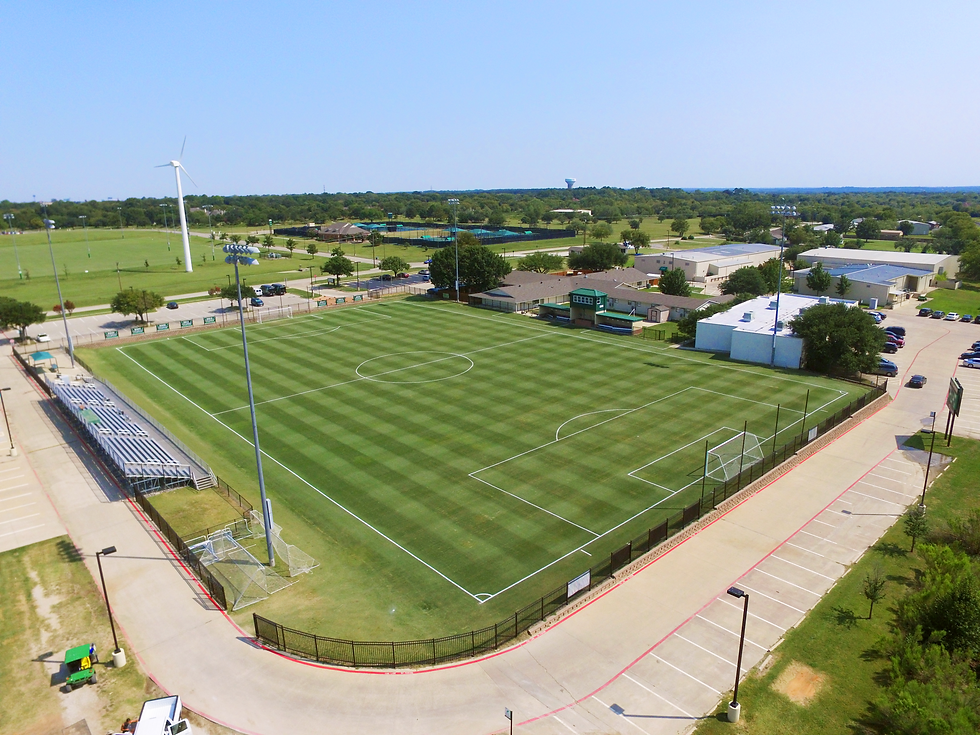Leveling the Playing Field: Will Topdressing Fix Grade Issues?
- Sports Field Solutions
- Oct 9, 2023
- 3 min read
Updated: Jan 8, 2024

Are you tired of watching your athletes stumble and trip over uneven turf during practice, or worse yet, the big game? Do you hope for a perfectly level playing field where every pass rout or running play unfolds as smooth as silk? One of the questions we're routinely asked when meeting with potential customers is, "Will topdressing my athletic fields help to level them out?"
What is Topdressing, and Why Should You Do It?
Before answering that question, let's define what topdressing is. Topdressing is the application of a layer of sand or any other acceptable topsoil spread across the surface of your athletic field with the purpose of:
Improving your soil quality
Enhancing drainage through the root zone
Fill in holes after aeration to create open pore spaces for gas exchange
Level out minor imperfections in the playing surface to help maintain proper grade
The Nuanced Truth about Topdressing
Getting back to the initial question, "Will topdressing transform my fields into a pool-table flat playing surface?" Well, that answer is a bit more nuanced than a simple yes or no. On finely maintained surfaces, topdressing works great to level out small dips and undulations. Even on newly sodded grass, topdressing helps to fill in the seams between tiles of sod and allows the sod to grow in much more smoothly. When topdressing is done multiple times throughout the year, it helps to keep the field at its proper grade, providing both a safe and consistent playing surface for all athletes.
For fields that aren't so meticulously cared for, topdressing is not likely to be the miracle solution you're hoping for. Many of the grading issues we observe are due to compaction, erosion, the settling of irrigation trenches or around heads, or due to poor construction. Whether your issues were caused by any of the aforementioned scenarios or any other unforeseen circumstances, one quarter inch (0.25") of topdressing, or about 1 ton/1,000 sq ft, simply won't erase a 1, 2 or 3 inch change in grade.
Exploring Alternatives
So, apologies for bursting your bubble, but we're pleased to say that there are some alternative solutions that may work for your unique situation:
Core aeration and rolling. This technique involves mechanically removing material from the playing surface (or specific to the affected areas) through core aeration, which works to loosen the soil. After sweeping the loose cores, you would utilize a 1.5-3 ton roller to roll and flatten the uneven surface. This is a relatively cheap and easy fix and while it works well enough with small grading issues (think flattening the lips around a baseball/softball infield skin), it’s not a viable solution for larger grading issues.
Addressing sunken irrigation heads. By digging and removing the turf around a depressed irrigation head, we can bring the heads to grade with risers and add more root zone mix around the heads before laying the turf material back down around the head.
Sod removal and backfilling trenches. We often see cases where lateral irrigation lines settle out after installation. In some instances, a little sand delivered directly into the trench and leveled out with the use of a 2x4 can solve this issue. In the more extreme cases where the trenches have settled 2 inches or more, we recommend removing the surrounding turf and then backfilling and packing the trenches with additional root zone mix before laying new sod back down on the now properly graded soil.
Laser grading and resurfacing. When all other options fall out of consideration, resurfacing your athletic field may be necessary. This approach includes stripping the existing turf and then addressing the grading issues head on. This means laser grading the root zone mix back to proper grade and, in some instances, may include adding or removing material to the root zone depending on the scope of the issue to be resolved. New sod will be applied after all grading issues have been addressed and after a 4-6 week grow in period, then you’ll be ready to begin utilizing your field with a safe, and even, playing surface.
So, as we’ve seen, the decision to top dress your athletic fields should be based on the specific needs and playing conditions of your turf. While topdressing can work wonders for maintaining a level playing surface on properly constructed and well-maintained fields, it likely won’t be the cure-all for athletic fields with significant grade issues. Consider the alternatives mentioned above to ensure your athletes can compete on the best possible playing surface. Remember, a level playing field doesn’t have to be just a dream, it can become a reality for you and your teams with the right approach and a little TLC for your turf.
.png)



Comments